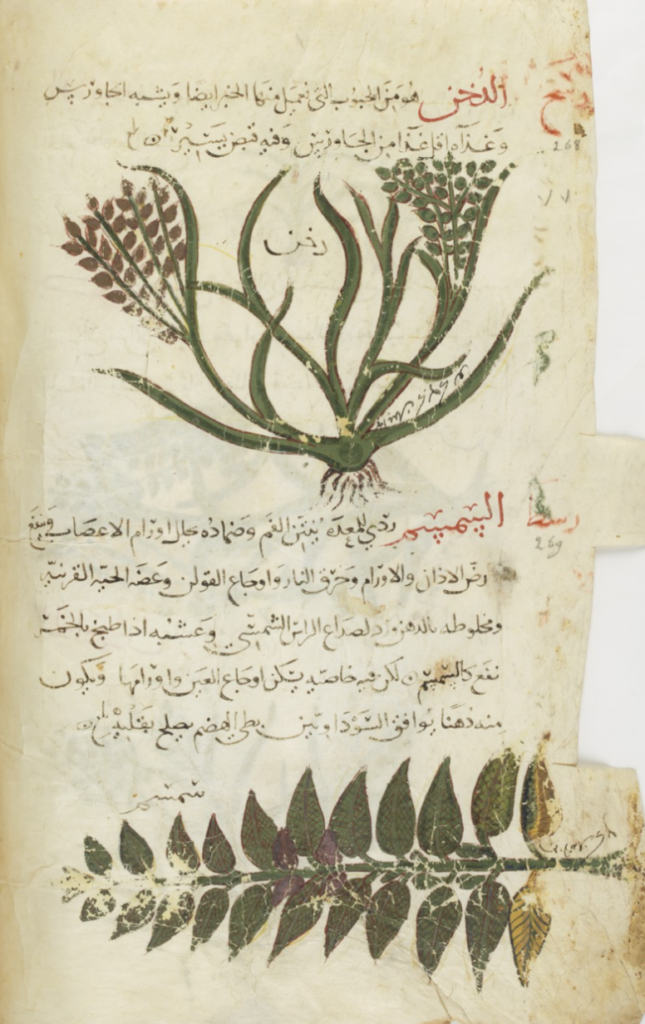Sesame (Sesamum indicum) is a plant that is native to the Indian sub-Continent, which is where it was first cultivated. Its seeds are extremely rich in oil (over 50%) and this was its primary use in early cultures, such as ancient Mesopotamia and Egypt, where it was known, respectively, as shamashshammu and smsmt. The earliest archeological evidence of sesame in Egypt goes back to the era of Tutankhamun, but no seeds have to date been found in Mespotamia.
Textual evidence reveals that it was used as an ingredient and seasoning, as well as in perfumes. It was not used very often in Ancient Rome and Greece, except in cakes. The Akkadian word is the origin of the Greek sésamon (σήσαμον), which is, in turn, the etymon of the Arabic simsim (سمسم). In Western (Maghrebi) Arabic dialects sesame was — and still is — known as juljulān (جلجلان), which was also incorrectly applied to coriander by some authors.
In cooking, it was used both hulled (abyaḍ, ‘white’) and unhulled (aḥmar,‘red’), and the seeds were often toasted. It appears in a paste, the famous tahini (ṭahīn simsim, rahshī), whereas its oil was used for frying and in the making of many sweets, breads, cakes and biscuits. In fact, sesame oil appears in about a quarter of recipes, and in The Sultan’s Feast it is also recommended for cleaning clay jars. In the literature, sesame oil is referred to as duhn al-simsim, duhn al-ḥall (دهن الحل), or shīraj (also shīraq), a borrowing from Persian, where shīrah denoted ‘sesame oil’, as well as ‘new wine’ and the expressed juice of any fruit except olives. Some authors refer to the oil being made with the help of wild (or Syrian) rue (حرمل, harmal). A number of recipes require the use of sesame oil in conjunction with olive oil.
Medically, it was thought to be bad for the stomach and to cause vomiting. An extract of the plant and leaves was recommended for hair, causing it to grow and removing dandruff. According to Ibn Sīnā, it was a potent emmenagogue and, when eaten with flax and cotton seeds, increases sperm and sexual potency. Al-Kindi, for his part, prescribed sesame oil to treat abscesses, toothache, cough, and even insanity!
In folklore, sesame also played an important part, already in ancient Babylonia, as a way of countering magic, and sesame presses were thought to house spirits (jinn). And, of course, children the world over are familiar with the magic formula “Sesame, open [your door]” (iftah ya simsim!) giving access to the cave in the story of Ali Baba and the Forty Thieves in the 1001 Nights.
The manuscript below (13th c.) is from an Arabic translation of Diosocorides’ Materia medica and shows sesame at the bottom. The translator took some liberties with the original Greek text, though; the fact that the seeds are used ‘to make oil from it, which the people in Egypt use’ becomes ‘it agrees with bilious temperaments’, with the translator adding that sesame is digested slowly which can be remedied by eating it with purslane. The top drawing is of millet (دخن, dukhn), which was the main ingredient in a recently posted Andalusian bread.

